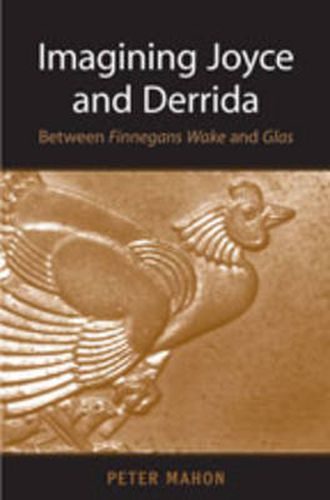Readings Newsletter
Become a Readings Member to make your shopping experience even easier.
Sign in or sign up for free!
You’re not far away from qualifying for FREE standard shipping within Australia
You’ve qualified for FREE standard shipping within Australia
The cart is loading…






How is meaning in one text shaped by another? Does intertextuality consist of more than simple references by one text to another? In Imagining Joyce and Derrida, Peter Mahon explores these questions through a comparative study of James Joyce’s Finnegans Wake and the deconstructive texts of Jacques Derrida, with a particular emphasis on Glas.
Mahon’s reading of these works insists on thinking through Derrida’s ‘Hegelian’ manner of understanding Joyce. Using key texts of Vico, Kant, and Heidegger, Mahon develops a theoretical framework that allows him to theorize and re-conceptualize the intertextuality between Joyce and Derrida in terms of the imagination. In order to test the flexibility of this imaginative framework, Mahon applies it to a sustained comparison of Finnegans Wake and Derrida’s under-appreciated masterwork, Glas. In so doing, Mahon reconfigures and expands the intertextual terrain between Joyce and Derrida beyond a simple catalogue of those instances where Derrida cites Joyce. Engaging and innovative, this erudite study makes an important contribution to literary critical theory.
$9.00 standard shipping within Australia
FREE standard shipping within Australia for orders over $100.00
Express & International shipping calculated at checkout
How is meaning in one text shaped by another? Does intertextuality consist of more than simple references by one text to another? In Imagining Joyce and Derrida, Peter Mahon explores these questions through a comparative study of James Joyce’s Finnegans Wake and the deconstructive texts of Jacques Derrida, with a particular emphasis on Glas.
Mahon’s reading of these works insists on thinking through Derrida’s ‘Hegelian’ manner of understanding Joyce. Using key texts of Vico, Kant, and Heidegger, Mahon develops a theoretical framework that allows him to theorize and re-conceptualize the intertextuality between Joyce and Derrida in terms of the imagination. In order to test the flexibility of this imaginative framework, Mahon applies it to a sustained comparison of Finnegans Wake and Derrida’s under-appreciated masterwork, Glas. In so doing, Mahon reconfigures and expands the intertextual terrain between Joyce and Derrida beyond a simple catalogue of those instances where Derrida cites Joyce. Engaging and innovative, this erudite study makes an important contribution to literary critical theory.